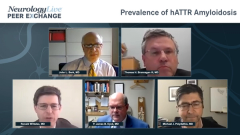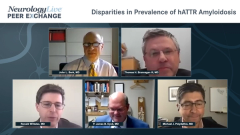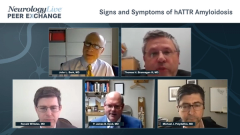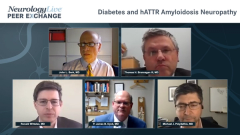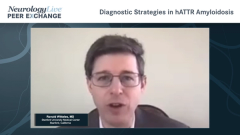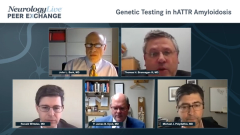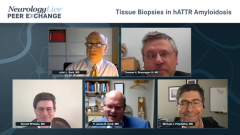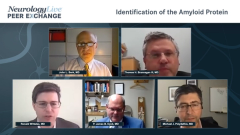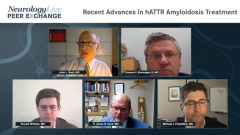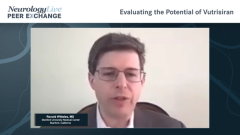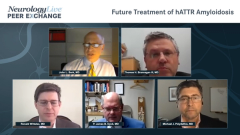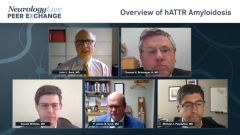
Overview of hATTR Amyloidosis
Panelists offer an overarching view into hereditary ATTR amyloidosis and differentiate the condition from wild-type ATTR amyloidosis.
Episodes in this series

John L. Berk, MD: I’d like to provide a bit of an overview of hereditary and wild-type TTR amyloidosis. Hereditary amyloidosis will be referred to as hATTR at times. Transthyretin is produced by the liver, the choroid plexus in the brain, and by the eye, the retinal epithelium. As therapeutics do not penetrate the blood-brain barrier, our focus will be on disease resulting from TTR produced by the liver. TTR is a protein made up of 127 amino acids; it circulates in the blood as a homotetramer, which is to say 4 identical proteins clustered together. It has minor responsibility for transporting thyroxine, and a more vital role as a transporter of vitamin A by binding retinal binding protein to which vitamin A attaches. Thyroxine binds to the TTR tetramer at the dimer-dimer interface; there are 2 sets of 2 that come together. Where they do, they form little pockets in which thyroxine can complex.
TTR amyloid arises from misfolding or abnormal aggregation of either normal TTR, which we refer to as wild-type disease, or mutated TTR variant protein. Wild-type TTR amyloid afflicts older men predominantly due to a propensity of the protein to misfold with aging. That’s not going to be our focus of discussion today. Mutated TTR results from point mutations conferring 1 amino acid substitutions, or rarely, deletions of amino acids in the 127 amino acid chain. Mutations and disease exhibit autosomal dominant Mendelian inheritance. Although focusing on polyneuropathy today, it’s important to keep in mind that TTR amyloid is a systemic disease. The final point I’d like to make at this initial portion of the program is that penetrance, the expression of clinical disease in people who carry the mutation, is not 100% and varies rather significantly depending on the particular mutation involved.
Thank you for watching this NeurologyLive® Peer Exchange. If you enjoyed the content, please subscribe to our e-newsletters to receive upcoming Peer Exchanges and other great content right in your inbox.
Transcript Edited for Clarity
Newsletter
Keep your finger on the pulse of neurology—subscribe to NeurologyLive for expert interviews, new data, and breakthrough treatment updates.

